Creative content has become the biggest driver of value for business and a key differentiator for successful organizations. In a media-saturated world, businesses demand more creative content for more channels to stay relevant.
For creative teams, that means fast delivery of great content is essential.
But every business operates in a regulatory framework, and the more regulated the industry, the more critical compliance becomes. Creative teams are caught in a tug-of-war between speed and control. They need to move fast to deliver amazing content but do so within the rules. Fail to do so and the consequences can be huge.
So, how do creative and marketing teams move fast and break nothing? The answer is a combination of people, processes, and technology.
Below, we’ll look at technology. With the right compliance management tool, you can streamline your organization’s compliance process, ensuring you stick to all legal requirements, industry standards, and organizational policies.
What we'll cover
Table of contents
Why creative teams should invest in compliance software

When we think of brand and marketing compliance, we tend to think of dramatic examples of non-compliance that make headlines, like brands being sued for false advertising or social media faux pas.
The reality is that every day creative teams grapple with the twin priorities of risk mitigation and delivery speed. Only with the right tools can teams eliminate the risk of breaking the law or violating guidelines while simultaneously delivering high-quality content within a regulatory framework.
Creative content must meet specific legal and regulatory rules for public advertising and internal brand standards. Failure to properly track creative production may result in compliance consequences that negatively impact your organization’s finances, customers, and reputation.
This is why it’s so important to ensure all your team’s work gets proper review and approval. Your organization should have clear records that show exactly who reviewed and approved assets, when they granted those approvals, and how your team stores and shares assets.
Compliance software solutions take the tedious manual oversight and guesswork out of the process. They allow creative teams to demonstrate regulatory compliance across every campaign and content type, making creative production and brand review more concise. When you automate the compliance process, you reduce the risk of human errors.
Key features and benefits of compliance management software
The right compliance management software saves time across your review and approval process. But time savings is just one of the many advantages of these tools. Other benefits include:
Centralized record-keeping
Compliance management software centralizes all documentation associated with reviews and approvals. Records are stored consistently and organized for easy access, and if your chosen software includes version control, you can easily refer to previous versions of assets as needed. You’ll never have to wonder when approvals were issued and who provided them, or worry about losing assets between iterations as it changes hands during the review process.
Centralized records also assist with audit trails. An audit trail helps simplify and organize the workflow management and collaboration process. Rather than sending emails back and forth when collaborating on creative projects, you can create a review and approval audit trail so everyone can see the comments, replies, annotations, and attachments alongside the creative asset.
Streamlined compliance process
Manual compliance is a time-consuming task. By simplifying and organizing the compliance process, compliance management software makes the process more efficient. Teams can easily submit assets for review and approval without adding unnecessary or labor-intensive steps to their workflow and project management process.
Risk management features can help identify and classify various business functions with a specific risk level. These classifications enable users to manage high-risk tasks without disrupting business operations.
Reduced risk of non-compliance
Non-compliance can result in steep penalties and damage your brand’s reputation. It costs an average of $5.05 million for organizations with high levels of non-compliance. Compliance management software provides an added layer of safety by helping businesses identify and rectify compliance gaps. You can proactively manage complex requirements while minimizing legal risks.
Policy management features provide a centralized location to store and access policy documents, portfolios, and procedures. It ensures all staff are up-to-date and familiar with the latest company policies and procedures.
Compliance management software can also include real-time alerts. Program your system to send notifications with compliance alerts whenever a task is completed, delayed, or failed. When problems arise, you can add escalation alerts to inform supervisors of issues so they can take the necessary actions to resolve them.
Compliance reporting allows you to report on the rules, standards, or laws your business must comply with. By monitoring industry-specific KPIs, you can ensure 100% compliance.
Enhanced collaboration and productivity
Compliance management software often includes features like comments and @tagging that can help teams collaborate and communicate more easily between departments and stakeholders. This makes the review and approval process more streamlined, housing all discussions about an asset under one roof, and enhancing team productivity. Better yet, it adds accountability across stakeholders and teams.
Improved efficiency with automation
Automation tools within compliance management software can also help facilitate greater efficiency and productivity. By automating tedious manual aspects of the review workflow, creative teams can spend more time focusing on their core duties and less time managing compliance-related tasks. Automation also standardizes tasks, reducing the risk of non-compliance.
Consistency across assets and campaigns
With compliance management software, it’s easy to ensure consistency across all your marketing content — regardless of format. By ensuring that all your assets and campaigns meet the same compliance standards, you can maintain brand integrity and avoid legal pitfalls across markets and regions.
Scalability
For growth-focused brands, keeping on top of compliance is a major factor in scaling operations. It minimizes risk, protects your reputation, and defines employee expectations, assuring that your content meets all applicable laws and regulations. With compliance management software, creative and marketing teams can take on more — and more complex — projects without disproportionately increasing their compliance workload.
Better visibility and decision-making
Compliance management programs centralize compliance requirements, giving you greater visibility into industry-specific regulations that impact your campaigns. Many programs continuously monitor regulations, processes, and risks to keep you informed.
A compliance calendar allows you to track progress and assign tasks to other users from one simple view. You can also set up alert notifications when you add new regulations. With workflows, you can assign specific tasks to individuals and track real-time progress. Each assignee is responsible for completing their task at the right time, and you can easily pinpoint potential bottlenecks in the workflow.
With this information at your fingertips, you can spot issues early in the process and communicate them back to your team. You’ll have the comprehensive insights to make quick decisions and avoid compliance violations.
Integrations to protect data integrity
The best compliance management software will also include integrations that ensure your data, processes, and assets flow seamlessly and efficiently from step to step through the review process. Not only does this reduce human error, it improves efficiency and ensures that compliance-related tasks are managed at every step in the process.
7 best compliance software options for 2024
Compliance software covers a wide range of use cases across the entire organization. Some are aligned for marketing and creative work, others for data security, some for internal training, and others for legal compliance. Here are a few options to keep your entire business in line with operating standards.
1. Ziflow: For regulatory and brand compliance in marketing teams
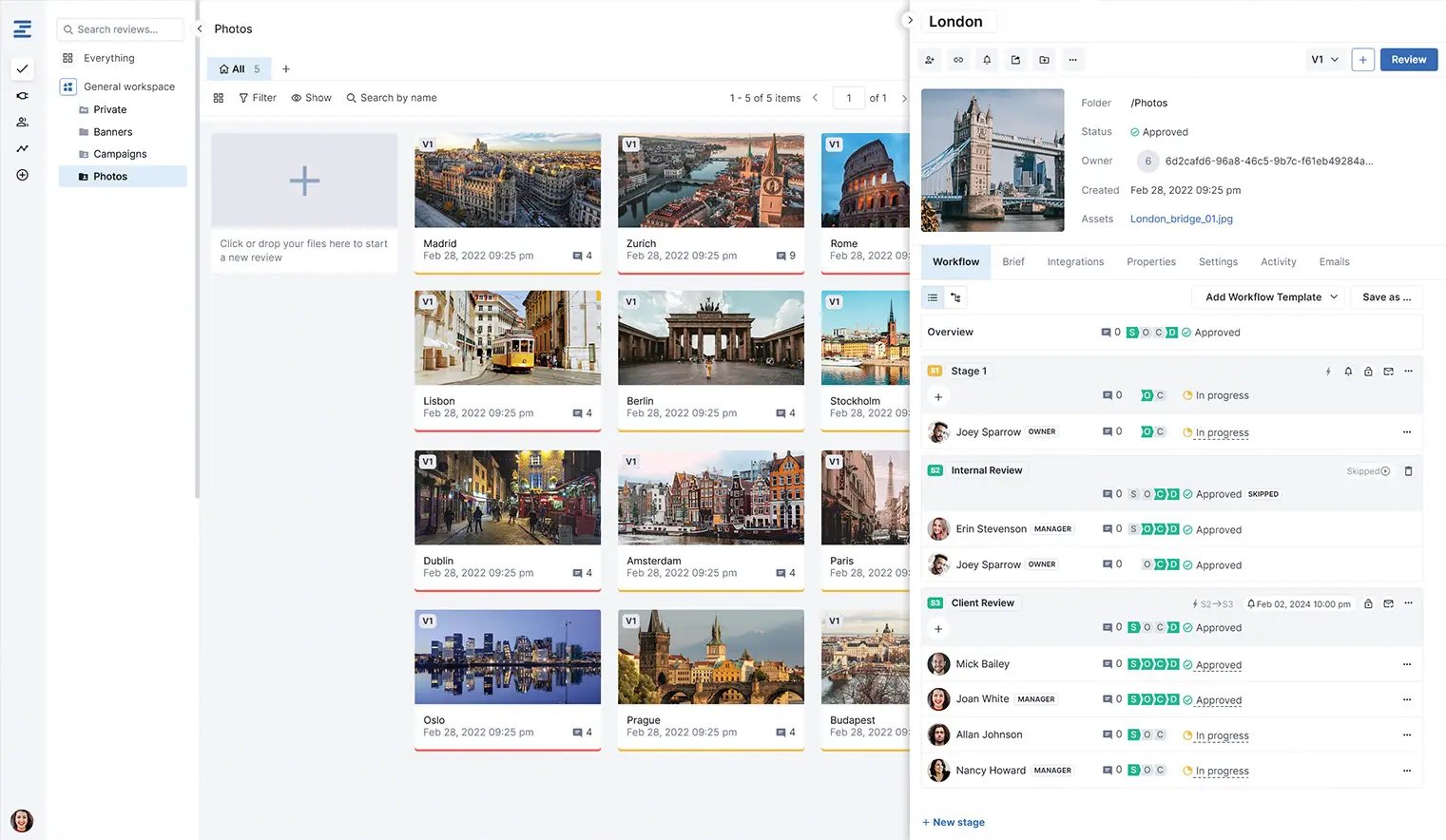
Ziflow is the only enterprise collaborative proofing platform that helps creative teams handle high workloads, streamline complex workflows, and ensure regulatory and brand compliance. By centralizing feedback in one platform, teams can stay on top of important details and get campaigns approved faster.
The platform is ideal for creative and marketing teams across many verticals, including healthcare, technology, consumer goods, manufacturing, retail, and financial services.
Ziflow customers include Amazon Web Services, Blue Cross Blue Shield, Splash Worldwide, Fingerpaint, and Healthfirst.
Key compliance features:
- Use workflow templates to create structured, reusable workflows for routing assets for review and approval. These templates enforce consistency in how creative work is produced and approved. You can set up stages to run sequentially or in parallel, and you can use sophisticated rules to determine what happens if a stakeholder requests changes.
- Customize reviewer roles to meet the specific compliance requirements in regulated industries. Creative teams can control who sees which assets at certain times, so you never expose information to the wrong people.
- Track the progress of creative assets and drill down to see the status of each stage and reviewer. That activity log can be maintained online at any time, as required by regulators.
- Use version management tools to ensure that each version of an asset is tracked, from the first draft to the final approved version.
- Maintain clarity for brand and marketing decision-making with formal approval tools that record clear determinations on each version of each asset for future reference.
- Integrate with existing creative production apps, like Adobe Suite, Slack, Trello, and more to completely track creative work across systems.
- Leverage Ziflow’s robust SOC-2 security to safely share creative assets internally or externally.
2. Skillcast: For compliance training
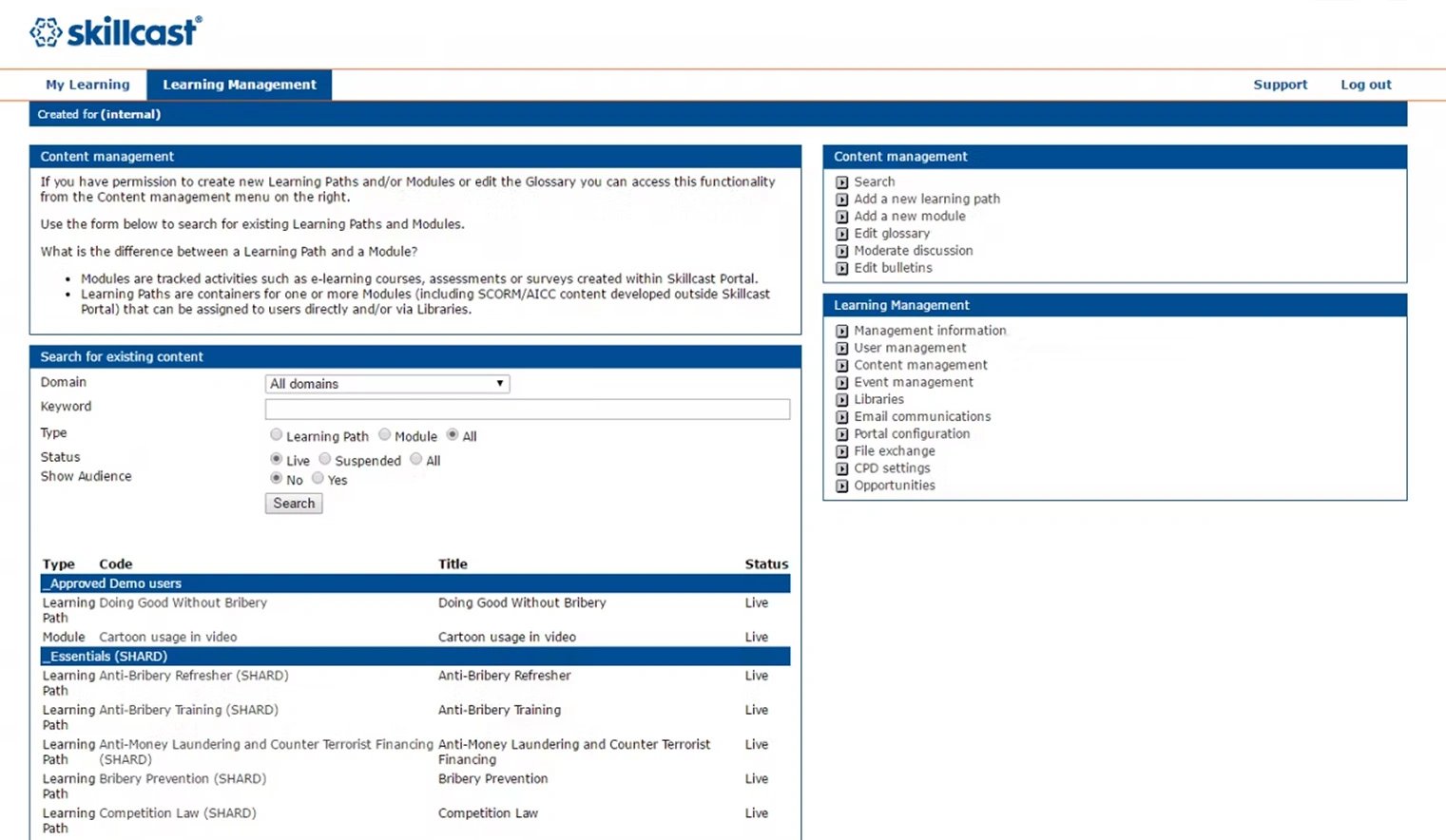
Skillcast is a digital learning platform for managing ethics and regulatory corporate compliance training making it relevant for maintaining up-to-date knowledge of compliance regulations and processes in creative and marketing teams. Skillcast’s off-the-shelf course libraries provide compliance training across key topics from bribery, equality, fraud, health, and safety to financial crime. Other topics include financial services, GDPR, insurance, and risk.
More than 500 leading companies use Skillcast to create compliance awareness in their organizations. This helps enforce consistency of business practices and makes employees aware of regulatory risks in their industries or roles.
Many clients use the off-the-shelf packages, while others engage Skillcast to create fully bespoke content. Some clients use the Skillcast Author platform to develop and deliver the training themselves via the Skillcast Portal.
Key compliance features:
- Access hundreds of courses on key compliance topics, including AML, bribery, equality, GDPR, health and safety, information security, and risk.
- Engage with compliance training content tailored to meet your requirements. Training consultants use Intelligent Learning (gamification, personalization, adaptive content, and analytics) to improve learner engagement and maximize the behavioral impact.
- Build and deliver your digital training content with one-click access to the Compliance Learning Management System (LMS) and innovative RegTech tools.
3. Connecteam: For compliance learning management
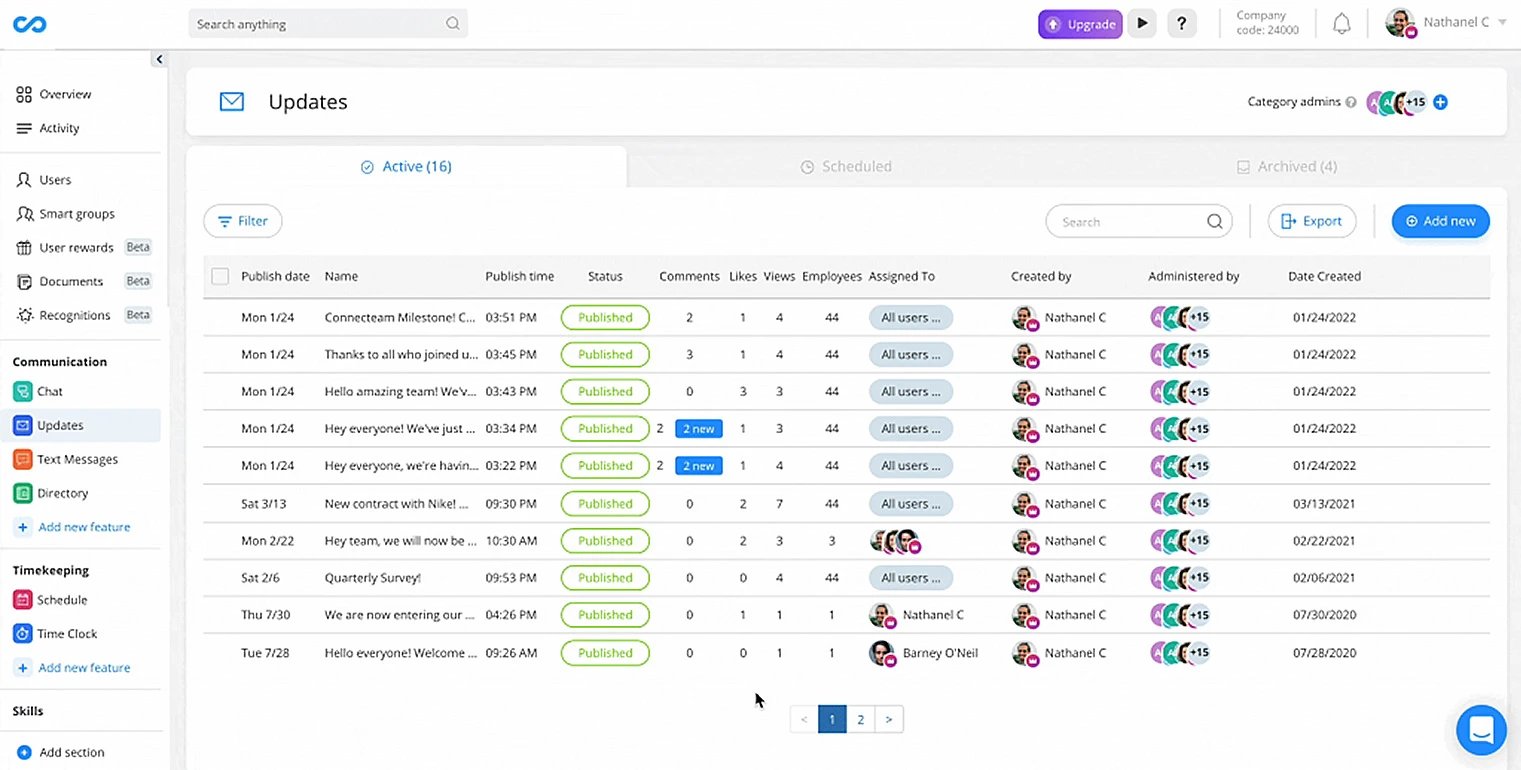
Conecteam is a compliance learning management tool designed to help train and certify large teams with complex compliance requirements. It helps maintain an audit trail, delivers new training materials, and keeps teams up to date with a digital knowledge base.
The platform best serves teams with large numbers of non-desk employees, as it digitizes and organizes certifications and training completed asynchronously, sends expiration reminders for certifications, and includes cloud-based backups.
Key compliance features:
- Creates a digital repository for documents, certifications, and policies.
- Securely stores employee records with SOC 2 certification and HIPAA compliance.
- Compliance training modules track progress and record employee results.
- Automatically sends expiration and renewal alerts.
- Allows for easy updates to policies and documents as regulations or compliance frameworks change.
4. Libryo: For legal compliance
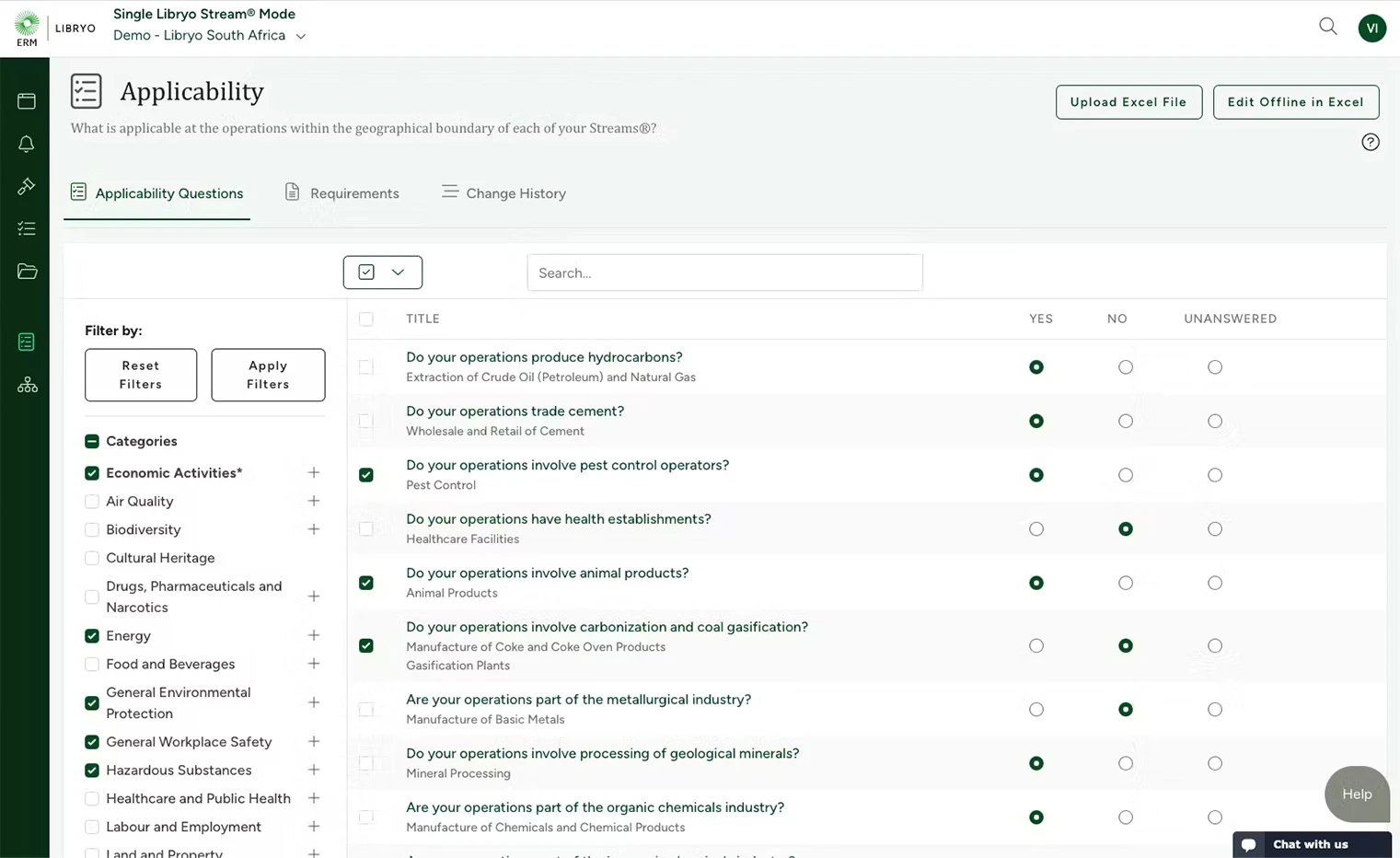
Libryo is an EHS regulatory intelligence solution uniquely crafted for every industry, organization size, jurisdiction(s), and use case. It integrates seamlessly with other risk management and compliance management platforms and offers the most advanced regulatory tracking technology in the market.
The platform is ideal for in-house professionals with legal, governance, risk, and compliance functions who work in organizations that operate across multiple global and local jurisdictions. Libryo can assist any organization, but focuses on power generation, waste management, global supply chains, oil and gas, mining, global financial services, and global facilities management.
Key compliance features:
- Includes a database of custom legal registers configured to each industry or operation type to deliver tailored content.
- Applies regulatory updates and informs users with real-time notifications or emails.
- Features an intuitive, user-friendly interface that allows users to search the Libryo database by topic or keyword to find the information that matters to them.
- Delivers regulations and legal updates in simple, jargon-free language for users with no legal knowledge, and built-in translations for global teams.
- Integrates seamlessly with Governance, Risk, and Compliance (GRC) systems, management systems, risk assessments, and audit reports.
5. Netwrix: For data security
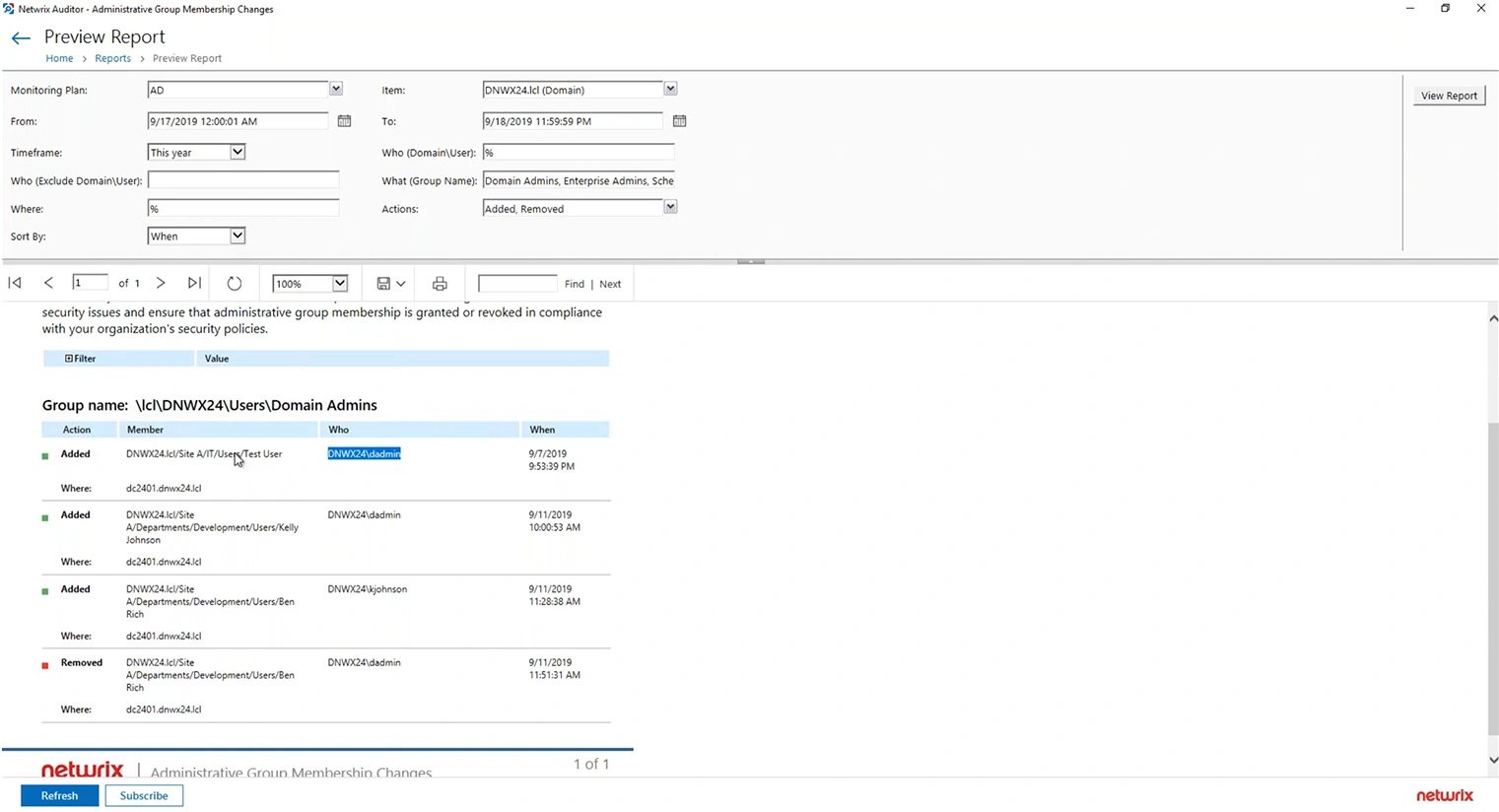
Netwrix Auditor is an IT audit software that helps you improve security, pass compliance audits, and optimize IT operations. By streamlining the compliance process, Netwrix helps improve your organization’s security by identifying and classifying sensitive, regulated, or mission-critical data (including structured or unstructured data). When it comes to risk management, 40% of organizations still report using manual procedures like spreadsheets.
IT professionals at organizations around the world, including those in financial services, healthcare, education, insurance, entertainment, and leisure, use Netwrix to establish, maintain, and prove compliance.
Key compliance features:
- Reduce risk to your critical assets by identifying your top data and infrastructure security gaps.
- Automate the data discovery and classification process to protect your most critical assets first.
- Quickly get the information required by management, auditors, and other stakeholders with change, access, and configuration reports.
- Respond to suspicious activity before you suffer data breaches and system failures or get fined for non-compliance.
- Spot malicious insiders and compromised accounts with a comprehensive view of all abnormal activity alerts.
6. QT9 QMS: For enterprise organizations
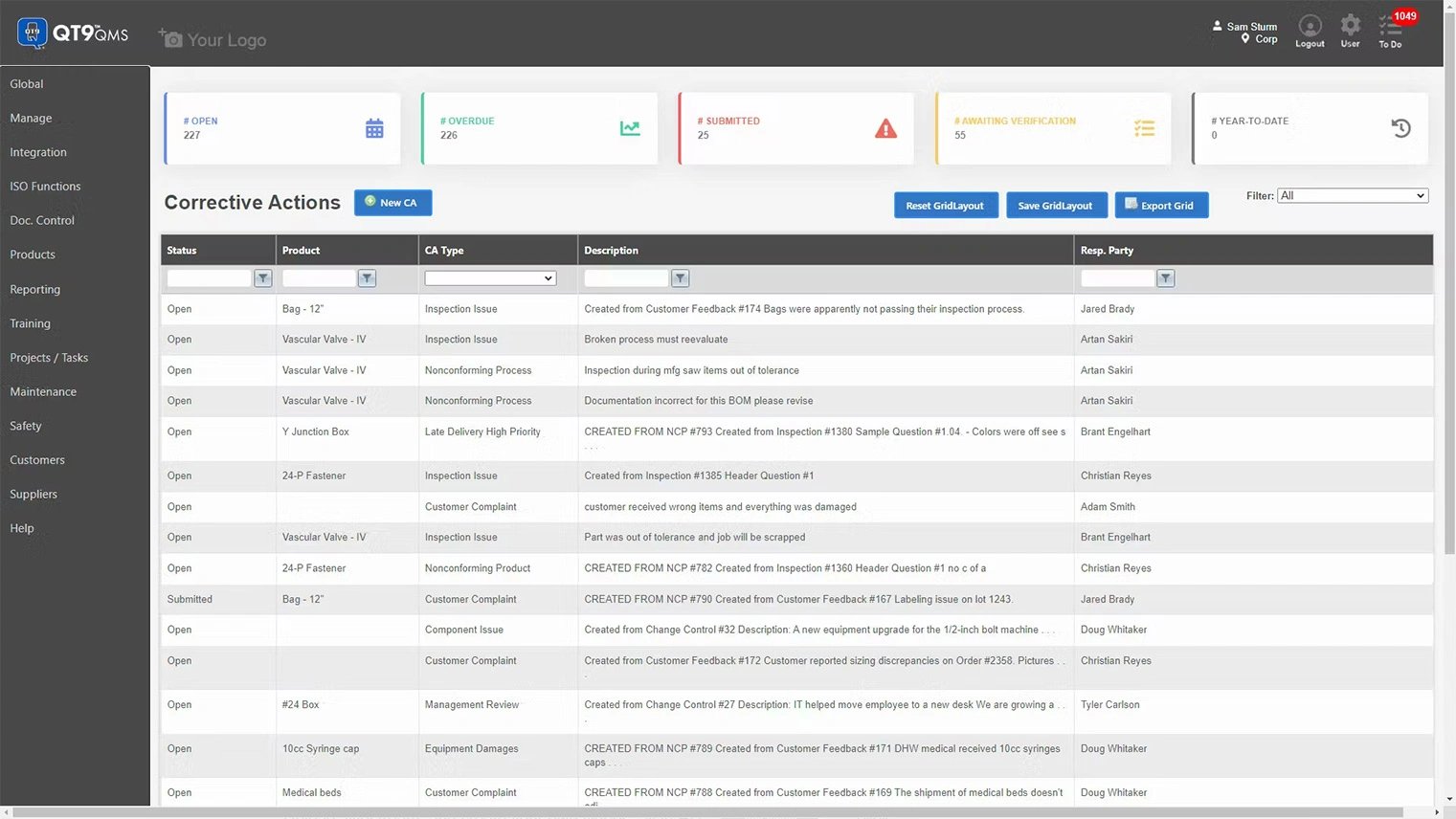
QT9 QMS is a mutli-modal, complex quality management software that helps large organizations handle compliance across manufacturing, training, documentation, and audit processes. The software helps with compliance management from everything from pharmaceuticals to computer hardware to the aerospace industry.
The strength of QT9 QMS comes from its ability to achieve massive scale and handle compliance requirements across all parts of an organization. The platform manages documents,and training modules, includes automation, handles corrective action when audits find flaws in a physical product, and more.
Key compliance features:
- 23 modules across document management, supplier management, maintenance, ISO compliance, and preventative maintenance.
- Ability to track inspections and automate corrective actions.
- Works across industries and regulatory environments, including ISO, FDA, and SQF.
- Allows users to build custom email alerts, automations, and processes.
- Includes document version control, audit trails, and electronic signatures.
7. AuditBoard: For managing internal audit processes
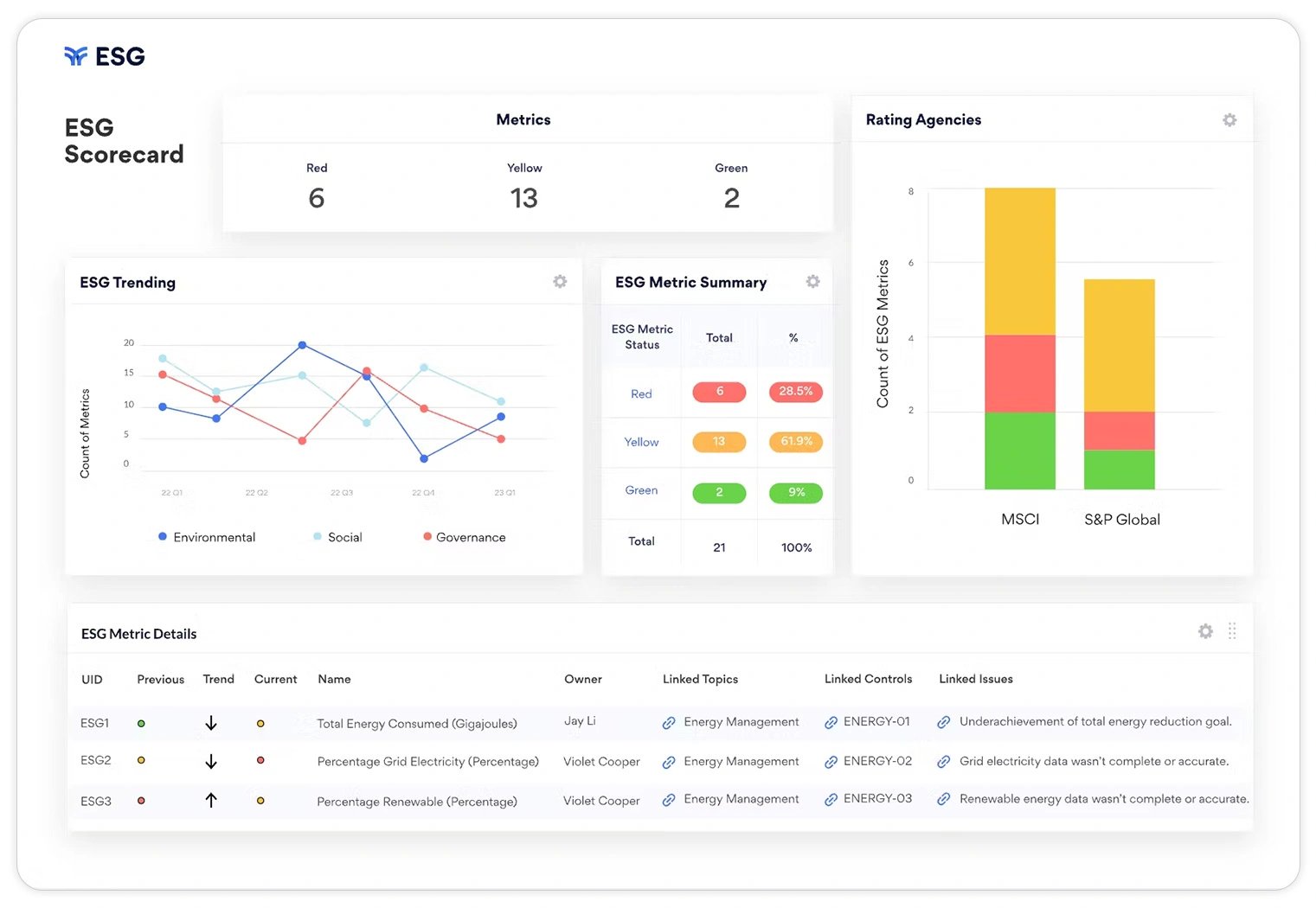
With AuditBoard, users can manage audit planning, fieldwork, and reporting from one simple cloud-based platform. AuditBoard’s Internal Audit Management Software allows you to quickly identify risks and trends, prioritize key audit areas, and optimize resources so you can make risk-aware decisions while enhancing productivity and visibility.
AuditBoard is trusted by some of the world’s most forward-thinking audit, risk, and compliance teams from companies such as Sleep Number, Dunkin’ Donuts, Columbia, and Priceline.
Key compliance features:
- Leverage built-in workflows and manage documentation in one location and easily compile, annotate, and review workplaces with the in-app markup solution.
- Automate follow-ups to keep stakeholders on track and create, send, and monitor document requests with ease.
- Centralize issue identification, follow-up, and reporting with purpose-built workflows that support multiple remediation owners and action plans.
- Create audit projects from your organization’s library of templated auditor programs to eliminate inconsistency.
- Get real-time insights to make strategic decisions and track audit plan progress to stay on top of key findings with visual dashboards and reports.
Improve the compliance process within your creative teams with Ziflow
While there are many compliance management software providers on the market, Ziflow is purpose-built to help creative teams ensure regulatory and brand compliance — and it’s the only enterprise online proofing platform. As the number of regulatory laws increases, you’ll want to ensure your organization has the right compliance software in place to protect the safety of your data, assets, and brand reputation.

With a track record that spans media giants like WarnerMedia, Viacom, and Google, Aaron's expertise shines through in multi-million dollar projects across various mediums, from traditional television to the dynamic realm of YouTube.




